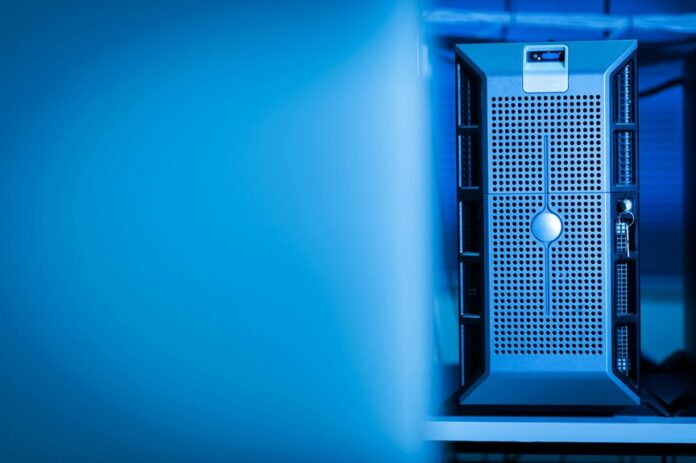To restart a Windows 11 laptop using keyboard shortcuts, users can press Alt + F4 when the desktop is focused to access the shutdown menu quickly.
Once there, highlight "Restart" and hit Enter to initiate the restart process.
Another option is utilizing the Windows + X keyboard shortcut to open the Quick Link menu, followed by pressing U to navigate to shutdown options.
Additionally, users can launch the Command Prompt by searching for it in the Start menu and execute the command "shutdown /r" for an immediate restart.
For more efficient system management, consider exploring various settings and features available in Windows 11, such as task management, system updates, and performance optimization tips.
Understanding Keyboard Shortcuts in Windows 11
How can users improve their efficiency in Windows 11? By mastering keyboard shortcuts, individuals can significantly enhance their productivity. These shortcuts serve as quick alternatives to mouse operations, allowing users to save valuable time during various tasks. Essential combinations, such as Ctrl + A for selecting all items and Ctrl + C for copying, streamline both text and file management processes. Users can also navigate the system more swiftly by utilizing the Windows key in combination with other keys to launch applications and access features seamlessly. Furthermore, shortcuts like Alt + Tab enable easy switching between open applications, which is crucial for multitasking. Windows key + M allows users to minimize all open windows quickly, providing a clean workspace for improved focus. Additionally, mastering keyboard shortcuts for restarting can help users reboot their system quickly without relying on the mouse. Numerous online resources provide extensive lists of these shortcuts, empowering users to optimize their Windows experience and gain greater flexibility in their workflows. By incorporating these shortcuts into their daily routines, users can transform their interaction with Windows 11 and achieve a more efficient working environment.
Accessing the Shutdown Menu
Accessing the shutdown menu in Windows 11 can be done quickly and efficiently through multiple methods that cater to various user preferences. Users can utilize the Start menu for intuitive navigation, where clicking the power button reveals a range of shutdown options including shut down, restart, and sleep. For those seeking a faster approach, the Power User menu, accessed via Windows + X, allows for swift keyboard navigation to shutdown preferences, making it ideal for power users. Additionally, keyboard shortcuts like Windows + X followed by U streamline the process further, enabling rapid access to shutdown or restart options without the need for a mouse. This is particularly beneficial as complete shutdown is preferred over sleep mode for energy conservation. Using PowerShell is another effective method that allows users to execute shutdown commands directly from the command line, further enhancing workflow efficiency. Whether you prefer graphical navigation or keyboard shortcuts, these methods ensure that everyone can efficiently manage their device according to their own workflow and comfort.
Restarting Using Alt + F4
- Ensure that you have the desktop in focus.
- Press Alt + F4 to bring up the shutdown menu.
- Utilize the arrow keys to highlight "Restart" and hit Enter.
This technique is not only convenient but also versatile, as it provides several options through a single shortcut. If this method does not function as expected, consider troubleshooting your keyboard or checking for any conflicts to ensure a smooth experience with keyboard shortcuts. Additionally, if you're using a laptop, make sure that any function (Fn) lock is not interfering with the Alt + F4 command. Remember that common issues such as hardware problems or key conflicts may disrupt the Alt + F4 functionality.
Utilizing the Quick Link Menu
The Quick Link Menu in Windows 11 provides users with an efficient and convenient way to access essential system tools and commands using a simple keyboard shortcut. By pressing Win+X, individuals can swiftly navigate to various options such as Device Manager, Task Manager, and more. Each menu item is designed with an underlined letter, which facilitates quick navigation for users. For instance, users can easily access shutdown options by pressing U and can restart their systems directly with the R key. Furthermore, the Quick Link Menu allows for customization based on different Windows versions, enabling users to tailor access to frequently used tools according to their preferences. This feature significantly enhances productivity, particularly during troubleshooting scenarios when the mouse may not be functional. Additionally, understanding the various functionalities and shortcuts available within the Quick Link Menu can greatly improve user efficiency and streamline workflow in a Windows environment.
Restarting via Command Prompt
Accessing Command Prompt provides a swift and effective method for restarting a Windows 11 laptop, particularly in situations where the graphical interface may be unresponsive or frozen. Users can effortlessly launch Command Prompt by pressing the Windows key + R to open the Run dialog, then typing “cmd” and pressing Enter. It is essential to familiarize oneself with the shutdown command syntax, especially the command “shutdown /r,” as it is key to executing a restart promptly and efficiently. Additionally, users can explore variations of shutdown commands, such as “shutdown /r /t [time in seconds]” to set a timer for the restart, or “shutdown /r /f” to force close applications before restarting. Understanding these options enhances the user's ability to manage system restarts effectively in various scenarios.
Open Command Prompt Quickly
Opening Command Prompt quickly is essential for executing multiple system commands, including restarting your Windows 11 laptop. Here are three efficient methods to access it:
- Press Windows Key + R: This opens the Run dialog. Type *cmd.exe* and hit Enter to launch Command Prompt instantly.
- Use the Start Menu: Click on the Start Menu, type *cmd*, then right-click on the Command Prompt in the results and select "Run as administrator" for elevated permissions.
- Navigate through File Explorer: Open File Explorer and go to 'C:WindowsSystem32'. Locate *cmd.exe*, right-click on it, and choose to run it as administrator for full access.
These methods enable users to access the Command Line seamlessly, ensuring they can execute necessary commands like restarting their laptop swiftly and effectively. Additionally, users may find it helpful to create a desktop shortcut for Command Prompt for even quicker access in the future.
Shutdown Command Syntax
While users often rely on graphical interfaces to restart their Windows 11 laptops, employing command syntax via Command Prompt offers a precise and efficient alternative. Utilizing shutdown parameters, users can execute a range of commands tailored to their needs. For instance, 'shutdown /s /f /t 0' immediately shuts down the system, while 'shutdown /r /f /t 0' forces an instant restart. Additionally, users can specify a delay with the '/t [seconds]' option, allowing for scheduled actions. Command examples like 'shutdown /s' or 'shutdown /r' enable seamless management of system restarts, empowering users with improved control over their laptops.
For those seeking to enhance their command line skills, understanding variations such as 'shutdown /h' for hibernation or 'shutdown /l' for logging off can further expand their command options. Moreover, users can combine parameters to customize their shutdown or restart commands to fit specific scenarios, providing a powerful toolset for efficient system management.
Restart Confirmation Process
To initiate a restart via Command Prompt, users simply enter the command 'shutdown /r', which triggers the system to reboot without displaying a confirmation dialog. This method offers several restart benefits, including:
- Speed and Efficiency: It enables a rapid restart of systems compared to using graphical methods, which can often be slower.
- Remote Management: This command is particularly advantageous for IT professionals who need to manage multiple machines simultaneously.
- Timing Options: Users have the flexibility to delay restarts by using the command 'shutdown /r /t [seconds]', allowing for better scheduling of system reboots.
While admin privileges may be required for executing some commands, the Command Prompt proves invaluable for system troubleshooting and command automation. This makes it a versatile tool not only in local scenarios but also in remote management situations, enhancing overall operational efficiency.
Additionally, users can explore further options available with the 'shutdown' command by typing 'shutdown /?' in the Command Prompt, which provides a comprehensive list of functionalities, including options for shutting down, logging off, or hibernating the system.
Using the Run Dialog for Restart
Using the Run dialog for restarting a Windows 11 laptop offers a quick and efficient way to access system commands. By pressing 'Windows + R', users can open the Run Dialog and type 'cmd' to launch Command Prompt. Entering the restart command 'shutdown -r' initiates a restart, with options for customization. For immediate restarts, users can append '/t 00', while adding '/t [seconds]' sets a delay. This method not only streamlines the process but also provides flexibility through different Restart Commands, enhancing user control over their system's functionality.
In addition to the basic restart command, users can explore various other shutdown options available through the Command Prompt. For instance, the command 'shutdown /r /f' forces running applications to close, ensuring a swift restart. Users can also integrate additional parameters such as '/m [computer]' to specify a remote machine for restarting, which can be particularly useful in networked environments.
Moreover, for those who prefer a graphical interface, navigating through the Start menu to the power options also allows for initiating a restart, but utilizing the Run dialog can significantly reduce the time taken for this action. Overall, embracing these shortcuts empowers users to manage their laptops effortlessly, providing them with the necessary tools to optimize their computing experience.
Exploring Other Restart Options
Exploring various restart options on a Windows 11 laptop unveils a multitude of methods designed to enhance user efficiency and convenience. Depending on specific restart scenarios, users can select from several alternative approaches:
- Power Button in Start Menu: This is a straightforward method that provides quick access to restart options, making it ideal for those who prefer simplicity.
- Command Prompt: Advanced users can utilize the Command Prompt to execute commands such as "shutdown -r" for immediate restarts, allowing for more control and customization of the restart process.
- Power User Menu: This menu offers a consolidated view that includes both shutdown and advanced options, catering to users who appreciate having a variety of choices at their fingertips.
These methods accommodate diverse user preferences, ensuring that whether someone prefers a quick and easy restart or requires more advanced functionalities, they can seamlessly restart their laptops according to their needs. By understanding and utilizing these different options, users can optimize their workflow and improve overall efficiency while using Windows 11.
Managing Open Applications Before Restart
Managing open applications before a restart is crucial for maintaining peak performance on a Windows 11 laptop. Effective application optimization involves identifying unnecessary apps that slow down startup, which can significantly affect user experience. To optimize performance, users can utilize tools like Task Manager and the Settings app for comprehensive startup management. This allows them to disable non-essential applications and streamline system resources effectively.
Regularly reviewing startup apps is essential, as it not only increases boot speed but also enhances battery life, making the device more efficient for daily tasks. Prioritizing applications based on their impact on system performance ensures a tailored user experience, granting users the freedom to choose which applications to run at startup. By managing startup applications wisely and strategically, users can enjoy a more efficient and responsive Windows 11 environment, maximizing their productivity and overall satisfaction with the system.
Additionally, exploring other methods to optimize application performance, such as uninstalling unused programs or utilizing third-party optimization tools, can further enhance system efficiency. Effective management of open applications before a restart is a vital step towards achieving an optimized and enjoyable computing experience on Windows 11.
Importance of Desktop Navigation
While desktop navigation might seem straightforward, it plays a crucial role in enhancing user productivity and overall experience on a Windows 11 laptop. Effective desktop organization and efficient navigation empower users to work smarter and more efficiently. Here are some key benefits to consider when optimizing your desktop navigation:
- Quick Access: Employ keyboard shortcuts such as Windows + D to swiftly minimize all windows and reach the desktop in an instant, allowing for quick access to files and folders.
- Taskbar Management: Personalize the taskbar by pinning your most frequently used applications for easy access. This not only saves time but also streamlines your workflow by keeping essential tools just a click away.
- Accessibility Features: Leverage built-in tools like JAWS and Narrator, which ensure seamless navigation for all users, including those with disabilities. These features enhance usability, making it easier for everyone to interact with their devices effectively.
- Desktop Customization: Organize your desktop by grouping similar files into folders and using background images that help you identify different sections at a glance. This visual organization can significantly improve your focus and efficiency.
- Virtual Desktops: Take advantage of the virtual desktops feature in Windows 11 to create separate workspaces for different projects. This helps in maintaining a clutter-free environment and allows for better multitasking.
- File Explorer Shortcuts: Familiarize yourself with File Explorer shortcuts to navigate through files and folders effortlessly. Knowing how to quickly access various locations can greatly reduce the time spent searching for documents.
- Widgets and Live Tiles: Utilize widgets and live tiles on your desktop for real-time updates on weather, news, and calendar events, keeping you informed without the need to open multiple applications.
Configuring BIOS for Advanced Boot Options
Configuring the BIOS for advanced boot options is crucial for optimizing system performance and effectively troubleshooting issues. Users can adjust various BIOS settings to modify the boot order, ensuring that the preferred boot device loads first. Additionally, enabling or disabling Secure Boot allows users to manage which operating systems are permitted to load on their systems. Depending on the hardware configuration, users may also switch between Legacy and UEFI modes to ensure compatibility with different operating systems and devices. Accessing the BIOS typically involves pressing specific keys such as F2 or Del during the startup phase. After making any desired changes, it is imperative to save and exit the BIOS setup to apply the updates, which can significantly enhance the overall responsiveness and flexibility of the system.
Installing Other Operating Systems Alongside Windows
When contemplating the installation of additional operating systems alongside Windows, users should familiarize themselves with the necessary dual-boot configuration steps, system requirements, and boot order settings. Understanding these components is crucial for achieving a seamless installation experience and optimal performance. Careful planning and execution will empower users to effectively manage multiple operating systems on their devices, ensuring compatibility and efficiency throughout the process.
Dual-Boot Configuration Steps
To successfully set up a dual-boot configuration alongside Windows 11, users must initially prepare their system by determining which supplementary operating system they want to install, such as Windows 10 or a Linux distribution. Key steps include:
- Ensure Sufficient Disk Space: Check your available storage to confirm that you have enough space for the new operating system. It's recommended to have at least 20 GB of free space for a smooth installation.
- Backup Current System: Before making any changes, back up your existing data to avoid potential loss during the partitioning process.
- Create a New Partition: Use Disk Management to create a new partition. Make sure to format it in a file system compatible with the new operating system you plan to install (e.g., NTFS for Windows or ext4 for Linux).
- Adjust Boot Order: Access your UEFI or BIOS settings to modify the boot order, ensuring that the installation media (USB or DVD) is prioritized over the existing operating system.
Utilizing the benefits of dual booting enhances flexibility, allowing users to explore different environments and applications effectively. Additionally, mastering partition management is crucial for optimal system performance, as it helps ensure that each operating system has the necessary resources to function efficiently.
System Requirements Overview
Setting up a dual-boot system requires careful consideration of the hardware and software requirements for each operating system. Windows 11 mandates a processor with at least 1 GHz and two cores, 4 GB RAM, and 64 GB of storage space. Furthermore, it necessitates TPM 2.0 and Secure Boot for enhanced security measures. When installing another operating system, it is crucial to verify that UEFI firmware is in place, as it replaces the older BIOS system. Conducting compatibility checks using tools like the PC Health Check app is essential, particularly for managing hardware compatibility effectively. Additionally, always ensure that your graphics cards support DirectX 12 to guarantee a superior experience across different operating systems. To further enhance your understanding, consider exploring resources related to dual-boot configurations, operating system requirements, and hardware compatibility tools.
Boot Order Settings
Changing boot order settings is crucial for installing other operating systems alongside Windows, as it determines which device the computer uses to start up initially. To adjust the boot order through BIOS settings, follow these steps:
- Access BIOS: Restart your laptop and press the appropriate key (e.g., F2, Esc) during startup to enter the BIOS setup utility.
- Navigate to Boot Tab: Use the arrow keys to locate the boot tab and select your desired boot device, such as USB, CD/DVD, or hard drive.
- Save Changes: Once you have prioritized the device, remember to save the changes and exit the BIOS setup to ensure the new boot order is applied.





